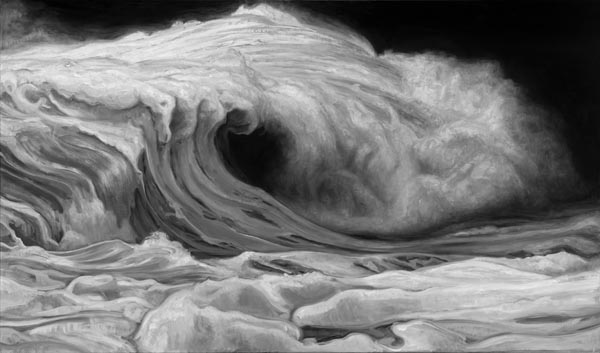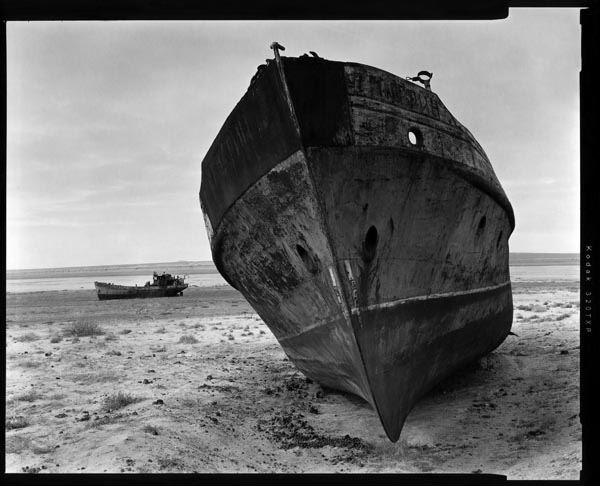Interviewsand Articles
From the Editor w&c #26: Revelations
by Richard Whittaker, Apr 12, 2013

photo: Camille Seaman
Agnes Martin said that all art is about beauty. If art had to be summed up in one sentence, this would be a strong candidate. Perhaps another would be, all art aims to reveal something. And revelation is a good fit with the material we’ve collected for issue #26. It’s apt that revelation also implies something hidden. Ludwig Wittgenstein puts it this way: “How hard I find it is to see what is right in front of my eyes!” It’s not often I’m in touch with that fact. It sounds so simple.
From reading Chögyam Trungpa I learned that the Tibetans have a word, drala. “We speak of meeting the dralas. The dralas are elements of reality—water of water, fire of fire, earth of earth—anything that connects you with the elemental quality of reality, anything that reminds you of the depth of perception.”
To actually experience this direct perception of reality is magic, but not the magic of some trick. Tricks stand in the way of this direct perception. It’s the magic of how, when it rains, the stones get wet. Trungpa describes this as being in the presence of utter reality.
It’s not that David Molesky’s paintings reveal waves, but one may feel closer to the beauty, power and mystery of water, and the forces that move it, through his paintings. I had a feeling that talking with David not only about his work, but about water would be worthwhile and I wasn't disappointed. And in a moment of serendipity, I came across a quote about art and water by Woody Allen: “I’ve come to the conclusion that the artist cannot justify life or come up with a cogent reason as to why life is meaningful, but the artist can provide you with a glass of cold water on a hot day.”
I had a feeling that talking with David not only about his work, but about water would be worthwhile and I wasn't disappointed. And in a moment of serendipity, I came across a quote about art and water by Woody Allen: “I’ve come to the conclusion that the artist cannot justify life or come up with a cogent reason as to why life is meaningful, but the artist can provide you with a glass of cold water on a hot day.”
How many things in life are better than a glass of cold water on a hot day? In another sense, I don’t think we realize how thirsty we are. Most of us go through our days without the slightest connection with utter reality and we don’t even notice it.
Could that help explain what happened to the fourth largest freshwater lake in the world? It has almost entirely disappeared in the last few decades. We talk with photographer Radek Skrivanek about what happened to the Aral Sea. His photographs are stark documents of his visits to the site of this environmental disaster in Ubekistan and Kazahkstan.  Does it help showing the evidence of our situation— the fact that this kind of thing happens over and over again? Radek is not so optimistic about it, but the hope remains that making such calamities visible might somehow make a difference.
Does it help showing the evidence of our situation— the fact that this kind of thing happens over and over again? Radek is not so optimistic about it, but the hope remains that making such calamities visible might somehow make a difference.
There’s an uncanny element in how material often appears just as needed while each issue is being put together. Finding the work of photographer Camille Seaman is an example. It felt like an accident running across her work on the Internet, and then discovering she lived quite nearby. And once again, water is the subject—this time in the form of ice. Camille has spent a decade traveling to the Arctic and Antarctic regions with her cameras. Her photos have been published in National Geographic and she’s worked for Russian scientists. It’s as if each of her photographs is a revelation.  They fulfill Agnes Martin’s dictum about art and beauty. But as I sat with this artist looking at photo after photo, something of the reality of global climate change broke through, and coming just a little closer to this reality is hard to bear. [Our profile of Camille was followed a few months later with an exceptional interview.]
They fulfill Agnes Martin’s dictum about art and beauty. But as I sat with this artist looking at photo after photo, something of the reality of global climate change broke through, and coming just a little closer to this reality is hard to bear. [Our profile of Camille was followed a few months later with an exceptional interview.]
Not everything in this issue features water, but our interview with Takayuki Zoshi feels perfectly congenial with it. I think that’s because the drala of water is fundamentally a spiritual reality. Zoshi, as he prefers to be called, was introduced to me through a video called “The Spirit Carver.” He carved his first Buddha on a walk across the United States in protest against nuclear weapons. He had been studying to become a Buddhist monk, but when his teacher saw this carved piece, he told Zoshi that carving would be his work in this life..jpg)
That leads us to our conversation with UC Berkeley professor Americ Azevedo. Although philosophy departments are full of people teaching philosophy, my experience is that it’s hard to find someone who really brings deep questions to life. No wonder one of his classes at UC has grown from 15 to over 600 students. Americ is one of those teachers students will speak of gratefully later in their lives.
There's quite a lot more in this issue, too. Not the least is this episode of Indigo Animal's ongoing adventures. How would Dame Elarnor get a group of summer session students from LSRI [Lawn Statuary Research Institute] to Rome? By Animalair, of course. 
As always, it’s exciting when a new issue has come together because magic has happened once again. It’s always difficult finding the right words to describe such things, but fortunately each piece speaks for itself.—rw
About the Author
Richard Whittaker is the founding editor of works & conversations and West Coast editor of Parabola magazine.
SUBSCRIBE NOW
TO OUR MONTHLY NEWSLETTER









Share Your Comments and Reflections on this Conversation: